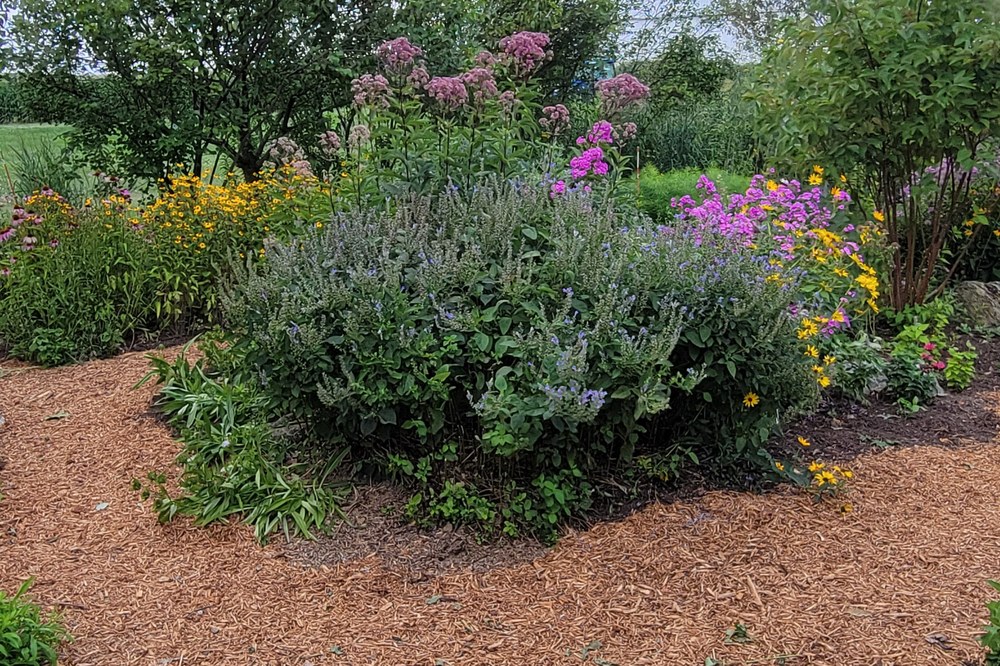Posted: August 4, 2021
Gardening involves projects that can be done every year at the same time. Though annual weather may influence the timing of these tasks, here are the things to do in August.

Native Garden at South East Agricultural Research and Extension Center. Photo and article by Pam Hall.
Continue Watering as needed.
Practice water-wise horticultural techniques. Plants need 1" of rain per week--only water when there is less than that. Do not over water. Ideally water early in the morning and water only the base of the plants above the roots--not the foliage. Watering tips.
Look for signs of drought stress.
It is important to examine our landscape plants for signs and symptoms such as wilting, leaf scorch, premature leaf drop, and dead, brown leaves that are still attached to stems and branches. Water and apply mulch as it will act as a physical barrier to water lost by evaporation. Be careful not to put mulch on any part of the plant. Drought stress.
If rainfall has been scarce, keep evergreens and shrubs hydrated.
Water to moisten soil to a depth of 8-10 inches. If you start watering shrubs and evergreens now there will be plenty of soil moisture around their roots before freezing temperatures make water absorption impossible. Watering trees and shrubs.
Continue to wage war on weeds. Why?
Weeds block out sunlight and steal water. They also compete with your good plants for nutrients in the soil. Also, by August annual and perennial weeds start to produce thousands of weeds that will germinate in your garden next spring. If left unchecked, these pesky invaders become extremely difficult to eliminate. Pull weeds.
Continue to deadhead.
To deadhead your plants, pick or cut off old, spent flowers to allow healthy new growth and buds to form. This causes the plant to continue producing flowers instead of beginning to produce seeds as part of the normal plant life cycle. It extends the blooming season. Deadheading.
Check your plants for signs of diseases.
Powdery Mildew is one of the most widespread and easily identifiable plant fungal disease. The common symptom is grayish-white powdery mat visible on the surface of leaves, stems, and flower petals. Infections spread as spores produced in these white patches move. Prune out infected stems and remove all fallen leaves, which can serve as source infections and dispose of them but never put in compost. The fungus survives winter attached to plant parts so be sure to remove all infected parts now. Be sure to sterilize garden tools used. Mildew and disease.
You are now seeing Japanese Beetles.
They are the major insect pests in Eastern United States. They voraciously eat almost anything. These are nontoxic ways to get rid of them. Hand Pick them and drop into a jar of water with 1 tablespoon dishwashing detergent. Make a simple solution of a quart of water and one teaspoon of dish soap and pour into spray bottle: spray directly on the pests. Insecticidal Soap can be used, it does not kill beneficial insects, and leaves behind no chemical residues. Japanese Beetles.
If you wish to spray or dust with insecticides speak to your local Penn State Cooperative Extension.

